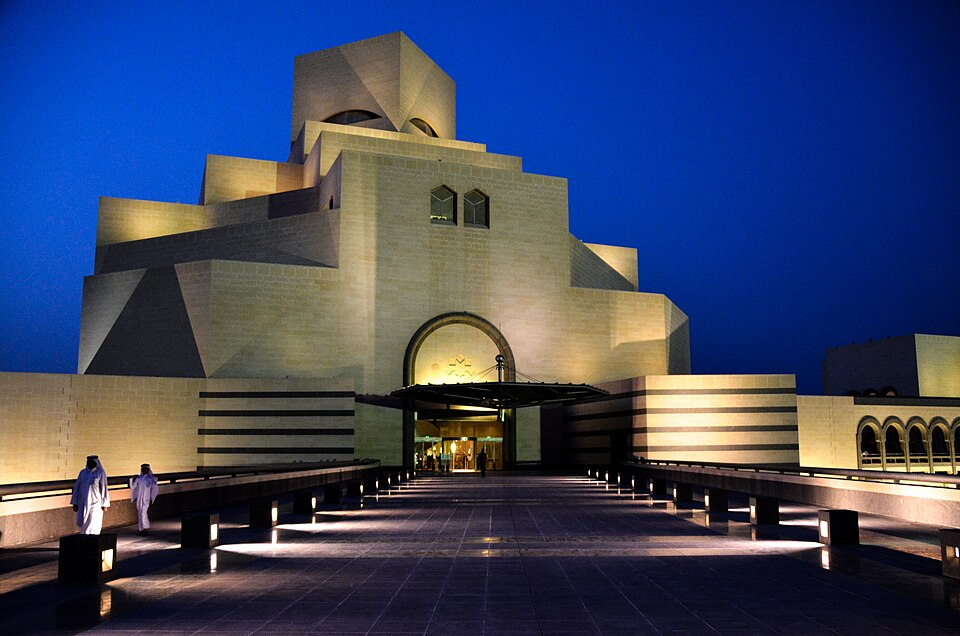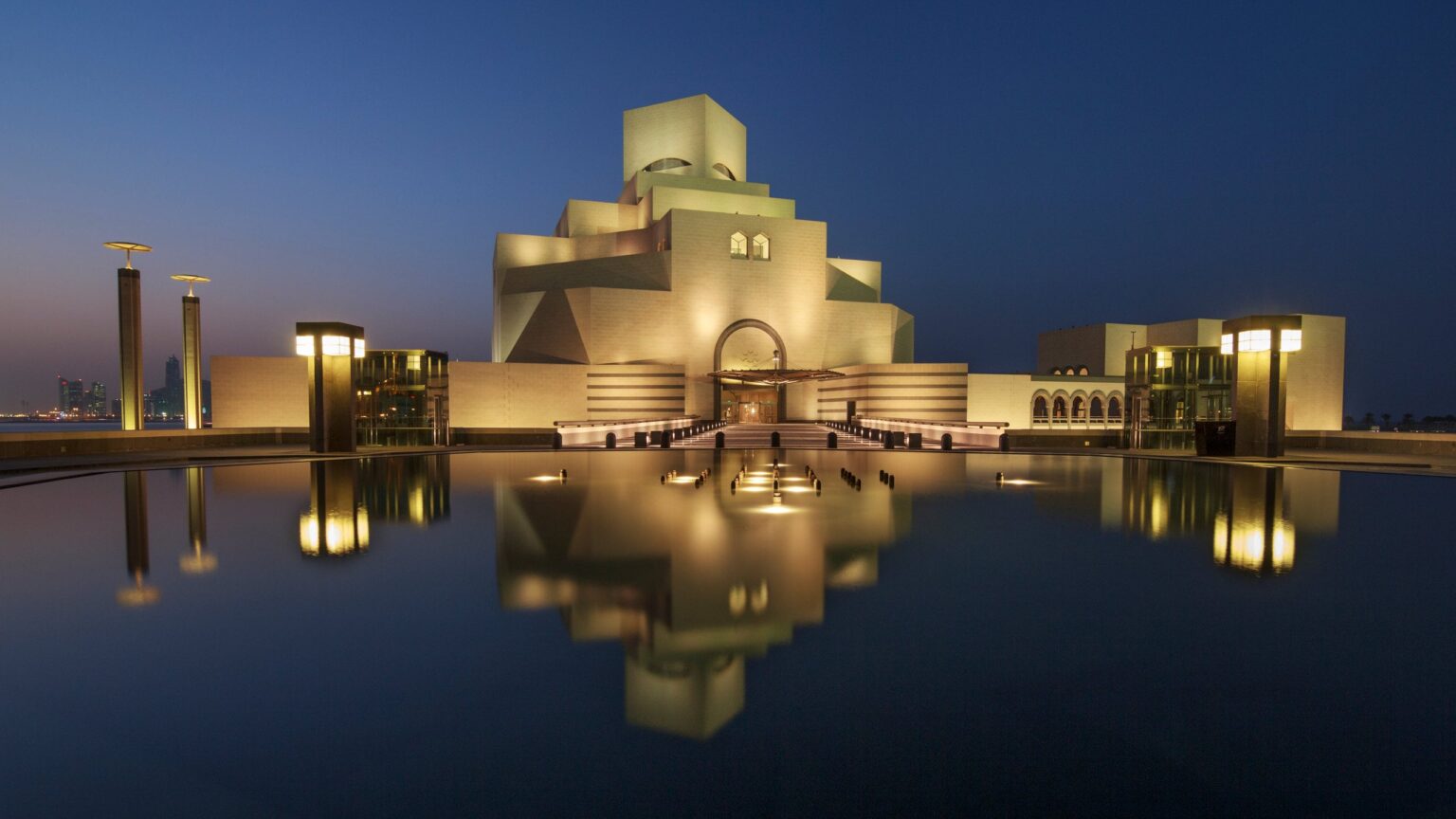The Museum of Islamic Art is more than just a museum it’s a breathtaking cultural experience in the heart of Doha, Qatar. Designed by the legendary architect I. M. Pei, the museum stands proudly on the city’s waterfront, offering unmatched views of Doha’s skyline and an unforgettable journey through 1,400 years of Islamic heritage.
Whether you’re a history lover, a cultural explorer, or a casual traveller, the Museum of Islamic Art should be at the top of your Doha itinerary. This article covers why it’s worth your visit, what you should not miss, and how this iconic structure continues to capture hearts globally.
Designed by a Legend: I. M. Pei’s Final Masterpiece
One of the biggest reasons to visit the Museum of Islamic Art is its world-famous architecture. The museum was designed by Chinese-American architect I. M. Pei, who also created the Louvre Pyramid in Paris. Pei came out of retirement at the age of 91 to take on this project. His inspiration came from ancient Islamic architecture, particularly a 13th-century mosque in Cairo.
The result? A geometric marvel built with limestone, sitting on its own island just off Doha’s Cornice. The structure blends traditional Islamic patterns with modern design, creating a spiritual and contemplative space. Even before you step inside, you’ll be mesmerised by the building itself.

Over 1,400 Years of Islamic Art in One Place
The Museum of Islamic Art holds a collection unlike any other. Its exhibits span more than 1,400 years, representing cultures from across three continents including Spain, Egypt, Iran, India, Turkey, and Central Asia. The focus keyword Museum of Islamic Art fits perfectly here, as this place stands as a testament to centuries of artistic achievement.
Inside the galleries, you’ll find ceramics, textiles, manuscripts, glasswork, jewelry, and metalwork. Each piece tells a story from the rich history of the Islamic world. One highlight is the collection of rare Qur’ans, some dating back to the 7th century.
The museum’s collection is not only vast but also carefully curated to guide you through Islamic history in a chronological and thematic way.
Stunning Views of Doha’s Skyline
Another powerful reason tourists love the Museum of Islamic Art is its location. Situated on the Doha waterfront, it offers some of the best views of the city skyline. The museum’s outdoor terrace is the perfect place to pause, breathe, and take in the beauty of modern Doha against the stillness of the Arabian Gulf.
Many visitors claim the view alone is worth the trip. It’s especially magical during sunset, when the golden light bounces off the museum’s limestone walls and the city lights begin to sparkle.
The Fountain Courtyard: A Peaceful Oasis
Don’t miss the museum’s stunning fountain courtyard, which is designed as a quiet oasis for visitors. This tranquil area features symmetrical water fountains, shaded archways, and seating spaces perfect for reflection. It blends serenity with artistry, inviting you to slow down and experience the beauty of Islamic geometry in motion.
The courtyard is also a favourite photography spot, thanks to its elegant design and peaceful vibes.
MIA Park: Perfect for Relaxation and Event
Right next to the museum is the MIA Park, one of Doha’s most vibrant outdoor spaces. This green, open park is lined with palm trees and walking paths, making it perfect for a relaxed stroll. The park hosts a number of outdoor events, including movie nights, food festivals, yoga sessions, and art shows.
You’ll also find cozy cafés where you can grab a coffee or light meal while enjoying the sea breeze. Many families and tourists visit MIA Park even if they’re not entering the museum, making it a destination in its own right.

Free Entry and Family Friendly
The Museum of Islamic Art offers free entry to most of its permanent galleries, making it accessible for everyone. Families are welcome, and there are frequent workshops, educational activities, and tours designed for children and students.
Even if you’re not a history expert, the museum’s layout and friendly staff ensure you can enjoy and understand the exhibits with ease.
World-Class Exhibitions and Programs
Aside from the permanent collection, the museum regularly hosts rotating exhibitions on specific themes or artists. These exhibits provide deeper insights into certain periods, techniques, or topics in Islamic culture.
Workshops, talks, and guided tours are frequently organised, often in multiple languages. This makes it easier for tourists and locals alike to engage deeply with the collections.
Tips for Your Visit to the Museum of Islamic Art
- Best Time to Visit: Early morning or late afternoon, especially to enjoy the skyline views without the heat.
- Getting There: It’s located near Souq Waqif and the Corniche. Taxis, Uber, and the Doha Metro make access easy.
- Dress Code: While there is no strict dress code, respectful attire is appreciated inside the museum.
- Photography: Allowed in most public areas but avoid using flash in galleries.
- Dining: Try the IDAM restaurant by Alain Ducasse on the top floor for a fine dining experience with incredible views.
Final Thoughts
The Museum of Islamic Art is more than just a museum it’s a cultural beacon that connects the past to the present. With its iconic design, priceless artifices, peaceful surroundings, and engaging events, it stands as one of the top attractions in Qatar.
Whether you’re a first-time visitor to Doha or a returning traveller, don’t leave without spending time at this world-class institution. You’ll walk away with a deeper appreciation for Islamic art, architecture, and the global stories they tell.
Make the Museum of Islamic Art a central part of your Doha experience it’s a journey through time you’ll never forget.
Do follow Gulf Magazine on Instagram
Also Read – Souq Waqif: 7 Amazing Reasons to Visit This Cultural Gem



